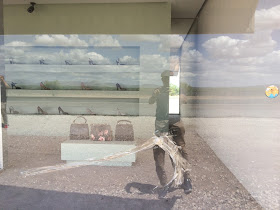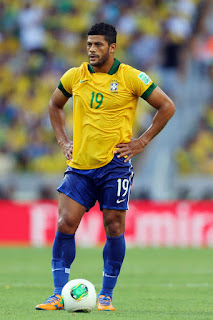Several days have passed and I find myself still heartbroken, reeling really, in the wake of the horrific mass murder this past Sunday, June 12, at the
Pulse Nightclub in
Orlando, Florida. Not long after 2 AM EST, gunman
Omar Seddique Mateen slaughtered 49 people, and wounded 53, on the club's
Latin Night, before police finally killed him several hours later. Nearly 90% of those slain were
Latino, with the rest being
Black American or both, and nearly 50 percent had familial links to
Puerto Rico. The youngest victim was 18, and the oldest was 50. One of the murdered, 49-year-old Brooklyn native
Brenda Marquez McCool,
is said to have shielded her son from death by urging her son to flee rather than come back to get her, and thus also be killed in cold blood. (I should note that I cannot type this sentence, let alone think about or read it, without tearing up.) The Pulse Nightclub shooting was one of the deadliest mass shootings in the US since the 19th century Civil War and massacres of Native peoples, and the early 20th century anti-black riots.
Here, courtesy of the
Orlando Sentinel, is the full list of the murder victims, with brief stories about their lives. Every single one is poignant and worth reading. Please let's not ever forget them. If you are interested in helping out the families of the deceased and wounded, you can do so
here.
Out for a night of fun and joy, in a space they thought was safe--multiply so, in that they could be themselves as Latinx and Black queer people where their sexual orientations, gender identities, and intersectional presentations of self would be affirmed; where they could be themselves as working-class queer people in a society and larger culture that regularly demeans, marginalizes and dehumanizes them;
and where they could be themselves in a space where their race and ethnicity would not subject them to the erasures of the mainstream white LGBTIQ community--the 300+ people at Pulse instead found themselves in a killing field. How many of us brown and black queer people have been in these very spaces, carefree, shedding the burdens of the day, of everything, for music, dancing, companionship, laughter, the possibilities and enjoyment of friendship and love?
Instead, by early Monday morning, the news was of so many lives cut down, so many at the beginning of adulthood and in their prime, once again by homophobia, and common to so many instances of recent mass murder in the US, gun violence.
There currently are conflicting reports about the terrorist Omar Mateen's background and actions on the night of the massacre, but what is clear is that he is a native of New York City, and moved to Florida as a child. His parents are immigrants from
Afghanistan, and the day after the murder, Mateen's father claimed that his son's response to witnessing two men kissing publicly might have been a factor in his decision to launch his rampage. Mateen was twice married, and has one child; his first wife, who now lives in Colorado, alleges that he beat her and was often angry, and that she had to be rescued from him by her parents. The FBI twice investigated Mateen, but supposedly dropped its investigation for lack of evidence. Despite this background he was still able to buy semi-automtic weaponry and deadly ammunition with relative ease. His second wife appears to have known about Mateen's plans, and allegedly even cased the bar with him and tried to dissuade him, though whether this is true has yet to be established. Whether she will be charged an accessory and conspirator is unknown. During a lull in the rampage, Mateen is alleged to have pledged allegiance to ISIS, and reports suggest that he had previously avowed support for the Taliban and Hezbollah.
Within a day of the massacre, witnesses came forward to say that Omar Mateen had frequented the bar and had repeatedly gotten so drunk he had to be carried out. A former classmate at the police academy told a reporter that Mateen had asked him out, and because the classmate was closeted he did not accept Mateen's overtures. Alongside this, there have been accounts that Mateen cruised people on gay male dating and sex apps, like Jack'd, and his first wife's Brazilian fiancé told a Brazilian news program that she told him Mateen was gay and that his father had called him an anti-gay slur. At least one account I've read, however, states that the FBI quashed all of these facts, but I find it hard to believe that so many people could have misidentified the wrong person. Whatever the case, and no matter to which religious or political group Mateen had affiliated himself, homophobia, cis-heterosexism, and a toxic form of macho masculinity, coupled with easy access to guns, appear to have fueled this terrible tragedy.
Once upon a time I would have said that a horrific event of this kind would occasion real change in our politics, towards a saner approach to the proliferation of guns, to hysteria about Muslims and immigrants, towards a shift against racism and homophobia. As we have seen time and again, however, over the last decade and a half, the opposite seems to be the result. Both parties appear to be in the thrall of the National Rifle Association. The GOP, which controls Congress, and its tribune, presidential candidate Donald Trump, are using Daesh and Islamophobia to gain votes and stir up fear. And although we have experience a sea change since the end of the 20th century on LGBTIQ rights, and have an African American president, we are neither post-racial nor post-gay, with racism, homophobia and misogyny still serving as potent toxins in the US body politic.
Where do we go from here? How do we heal? One step must be to be remember the names of those who were murdered in Orlando, to read up on their lives, and to vow to transform this society for the better, with one step being to vote, and urge others to, in November.
***
A few years ago, I wrote a series of poems recalling various gay/LGBTIQ bars in Boston. Here's one of them I've never published, but am doing so here, in tribute to the victims in Orlando.
NAPOLEON CLUB
Navy sky, white moon, red brick,
door and bell: discretion was the precondition
for elegance. Inside, gray hair peers
from every other head and open-collared chest.
There’s currency here in being the youngest.
I pass my dollars across the bar—no beer
for me though it’s butcher. A gin-and-tonic.
I sip and see how far my smile and wit and calves
sculpted in high school sprints can get me.
Nearby, men hover around a sleek black
grand piano, singing "My Funny Valentine"
in unison because it’s February, "Somewhere
Over the Rainbow" because it’s Judy.
On the dance floor beats tap gently
between the spinning bodies. I ignore
the first two guys who ignore me, approach
a third brother, debonaire in his military-cut suit
and patent leather loafers, stout as a general,
ageless as a vampire. To Duran Duran,
Gloria Gaynor we twirl out a sweat, mouthing
the lyrics to songs we recall without effort
into each other’s grins, glide closer, kiss,
return to bopping. We agree that rhythm’s
a bridge to the soul and we'll cross it, grab
our overcoats, trot out into the Boston dark, fingers
popping to steps as hot as the groove in our hips, melting
night snow on the tips of our tongues: "Ain't no stopping us…."
Copyright © John Keene, 2000, 2016.


















































